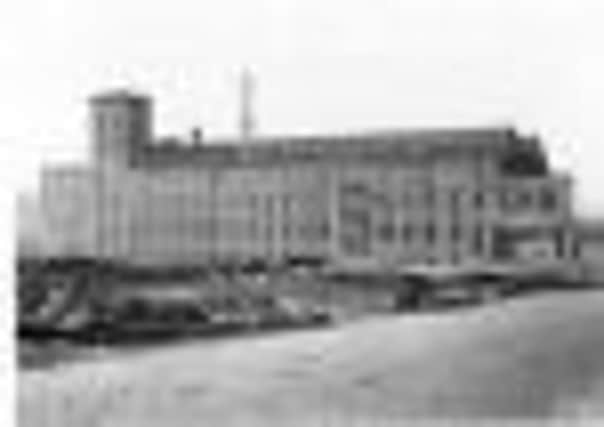Peek Into The Past: We should retain our cotton mills


Burnley was once the leading producer of cotton cloth in the world and cotton manufacturing made the town what it is today, though, understandably, a diminishing number of residents who have personal experience of the industry, might like to see all trace of it removed. It is my opinion that we need to retain some of the buildings associated with the cotton industry, but please note, I have not used the word “preserve”. For me the buildings we retain must be used productively.
There are still dozens of cotton mills (81 in all) in almost all parts of the borough. Some of them (15) are listed with a further seven regarded as being of “real significance”. Only one of the mills is occupied by a cotton manufacturing firm but another is the home of the Lancashire Museum of the textile industry. The others have been converted in to small units, sometimes given the grandiose title of a “business park”, while there are some that are derelict and have been for some time. In other towns, suitable mills have been converted for residential use, something that has not happened, on any scale, in Burnley.
Advertisement
Hide AdAdvertisement
Hide AdIn Trafalgar Street what might be regarded as the perfect use for Victoria Mill has recently been found. The mill dates from 1855 and was built by the Massey family who are better remembered as brewers than mill owners. The Masseys, it is often not realised, were involved in the wool industry before Burnley became a cotton town and retained their interest in cotton textiles for most of the 19th Century.
Work has started on Victoria Mill which, by this time next year, will be welcoming its first students as a University Technical College providing the training once made available to the young wishing to be trained for a career in manufacturing industry as apprentices. In fact, the UTC will be much more than this and will attract students from throughout Pennine Lancashire and, perhaps, further afield.
Not every industrial building can be transformed in the exciting way that will apply to Victoria Mill and it cannot be denied that a number of mills remain problematic to the communities of which they are a part. Some are simply eyesores, others constitute a danger to local children and, in this sense, it is understandable many local people would like to see the back of them.
However, this would be an unfortunate knee-jerk reaction. In Burnley we have some very important mill buildings. Perhaps the most significant of those that are left, is Harle Syke Mill, in Burnley Road, Briercliffe. This mill also dates from 1855 though it was joined by a much larger adjacent mill in 1904. Architecturally, it is not the most appealing, or typical, of our mill buildings but, historically, Harle Syke Mill can be described as the home of Burnley’s Victorian cotton industry for it was in this building that many of the firms which came to dominate the local cotton trade originated. In cotton manufacturing terms Burnley became a colony of Harle Syke!
Advertisement
Hide AdAdvertisement
Hide AdToday Harle Syke Mill, even by locals, is better known as Oxford Mill. The reason is that, some years ago, a firm from Accrington which took its name from Oxford Mill there, moved a production unit to Harle Syke. They put up a sign with the name of their firm – the Oxford Mill Co. Ltd – on the Holgate Street elevation and this new name has stuck for more than 40 years.
The former weaving shed at the mill has been divided into small units now occupied by a variety of firms but the original roadside section in Burnley Road is not now occupied. Planning consents have been gained to convert this part of the mill into dwellings but nothing has happened and the mill is apparently deteriorating.
Similar stories can be told of numerous other mill buildings in the town and the situation is so serious that English Heritage is becoming concerned. They have commissioned a report from Oxford Archaeology North which has contributed to what is being called a sub-regional mills strategy, the aim of which would be to tackle the problem of the poor condition and vacancy of many of our historic mills.
At the present time, I am not sure what the outcome of the report might be but it occurs to me, as it does to English Heritage, that in Burnley, and elsewhere in the county, we need to assess what is left of what was Lancashire’s great industry.
Advertisement
Hide AdAdvertisement
Hide AdSome years ago I wrote about the sites, as they were then, of Burnley’s now defunct textile engineering industry. More recently, I have researched the history and sites of Burnley and districts water mills. Perhaps it is time do the same for other industries, or, maybe, we should do what has recently been achieved in Halifax where Calderdale MBC has published a fascinating book about the town’s historic buildings. I understand a similar project is being undertaken in Lancaster. If we leave it much longer, and without the appropriate protections being in place, it will be too late to achieve the same for Burnley.
The purpose of this article is to seek your views about whether Burnley should go down this road. I would welcome what you have to say and you can contact me at [email protected].
Roger Frost